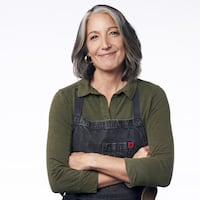Celebrity chefs get all the attention. However, the real culinary rock stars may reside in the least talked about sector of the food-service industry: catering.
A busy fine-dining restaurant might do a few hundred covers a night. Try feeding 500, even thousands, in one sitting — and without a real kitchen — night after night.
Two new books give readers a behind-the-scenes look at the high-stakes, pressure-filled world of catering.
In “Hotbox: Inside Catering, the Food World’s Riskiest Business” (Henry Holt and Co., $27), brothers Matt and Ted Lee (authors of “The Lee Bros. Southern Cookbook” and other titles) shift their attention from Southern foodways to the special-events circuit. Here, they capture how different the world of “food-crafting in the field” is from cooking at home or in a restaurant.
“There’s no James Beard Award for them, yet the food catering chefs create is often every bit as succulent and dazzling as what’s served at the gastronomic temples of the nation,” the brothers Lee write. “And they’re cooking with handicaps a restaurant chef couldn’t fathom.”
The storytelling is lively from the beginning, in which they depict a night that Atlanta chef Stephen Satterfield and his Miller Union team cooked at the esteemed James Beard House in New York. Called into this notoriously dinky kitchen is a trio of catering veterans (“Special-Ops culinary mercenaries”) who work magic with a simple sheet pan cabinet, called a hotbox, that becomes a makeshift oven when warmed by the flames from Sterno fuel.
A hotbox is just one term in the catering lingo that the Lees learned. There are “re-runs” (when a catering truck needs to make a return visit to an event site because something was forgotten, lost or damaged). And, events have acronyms: “CR & D” stands for cocktail reception and dinner while “CR & BD” refers to cocktail reception and buffet dinner. Those who labor in the industry might work “prep” (daytime hours in the catering company kitchen) or “fiesta” (on-site, during the event).
Besides what they learned hands-on in the trenches as kitchen assistants, the Lees also trace the origins of modern catering. That takes them back to Donald Bruce White, aka the Telephone Chef, who hit New York City in the early 1960s with prepared-meals delivery service, and Frenchman Jean-Claude Nédelec, who perfected techniques to heat and cool a hotbox.
“Hundreds, if not thousands, of days of trial and error, over- and under-cooking, and poking and prodding, would be required for us to build up a cumulative feel for this device,” the Lees write with awe and admiration.
Read “Hotbox,” and you, too, likely will have much more appreciation for the folks who fashion the next catered event you attend.
Whereas “Hotbox” is the result of four years of research, Mary Giuliani’s “Tiny Hot Dogs: A Memoir in Small Bites” (Running Press, $24) focuses on her career as a high-profile East Coast event planner and caterer.
Through a series of digestible short stories, she charts an unexpected journey to becoming a caterer to the stars — her early goal was to be an actress.
In her decades of silver tray service, Giuliani has seen it all. What makes “Tiny Hot Dogs” a fun read is her down-to-earth, pinch-me mindset as she brushes shoulders with the rich and famous while feeding them her beloved pigs in a blanket, aka Tiny Hot Dogs.
She’s lunched with Robert De Niro, handed a Diet Coke to her heartthrob, Alec Baldwin (as her mind spins up a steamy love affair with the actor), and even got “stood up” by Bill Murray, making her own dinner party wait around for his nonarrival.
But, it hasn’t all been fun and games.
“When someone tells me that they want to quit their job and open a catering company, because they love to entertain, I give them a little test,” Giuliani writes. “I ask them to imagine how it would feel to throw a party almost every day for an entire year. Now, imagine throwing multiple parties on the same day. Next, I ask them how they feel about physical and mental exhaustion (often at the same time) and guests with endless complicated food allergies. Finally, I ask if, keeping all this in mind, they’re prone to panic attacks.”
Panic attacks and learning curves are par for the course in catering, especially when attempting to be over-the-top to impress guests. One of Giuliani’s lessons learned: Never serve food on trays filled with water and live goldfish swimming inside. The fish will get freaked out, poop, suffer heart attacks and die.
While Giuliani has learned how to keep A-listers content, without going crazy herself, her access to the lives of the rich and famous has taught her a larger lesson. “I realized that if I didn’t start loving my life for exactly what it is in the moment, then everyone’s grass would always appear greener,” she writes. “I started to notice that a lot of people who we assume have it all struggle with the same insecurities and unhappiness that plague everyone. More is not more fulfilling. Bigger is not better. You can order all the caviar in the world and still be hungry.”
Read more stories like this by liking Atlanta Restaurant Scene on Facebook, following @ATLDiningNews on Twitter and @ajcdining on Instagram.








